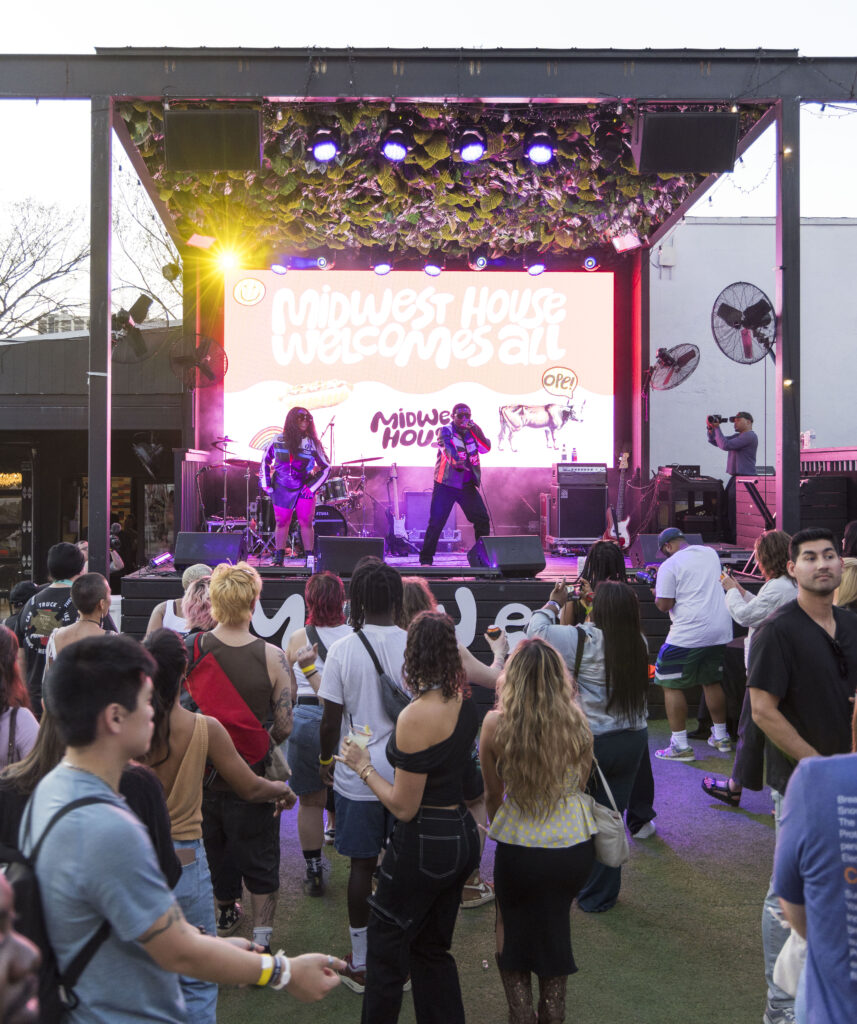
Ann Arbor SPARK returned to SXSW this year to spotlight Michigan’s leadership in mobility, manufacturing, and entrepreneurial innovation. As co-sponsors of Michigan Day at Midwest House on Tuesday, March 11, SPARK helped showcase the state’s growing influence in hardtech, advanced air mobility, and startup funding strategies.
Midwest House served as a central hub for showcasing the Midwest’s innovation and creativity during SXSW. Over four days, it hosted 55 events, featured 151 speakers, and welcomed nearly 9,000 attendees—a record-setting year. Backed by 79 partner organizations, the space offered a mix of panels, pitch competitions, and performances. With over 240 applicants for two startup competitions, Midwest House highlighted the region’s growing entrepreneurial momentum in a national spotlight.
Unlocking Capital in Michigan’s Evolving Startup Ecosystem
One of the day’s key moments was a dynamic conversation led by Mike Flanagan, SPARK’s Vice President of Capital Programs. The panel brought together three trailblazing voices from Michigan’s startup and investment community:
- Crystal Brown, Co-Founder & CEO, CircNova
- Josef Hjelmaker, Founder & CEO, Electric Outdoors
- Jim Tenzillo, Principal, Michigan Outdoor Innovation Fund
The panel tackled real-world strategies for securing capital in Michigan, an increasingly competitive funding environment. Panelists shared candid insights about cap table management, the power of relationship-building, and the importance of being authentic yet adaptable. “Stay true to who you are, but remain moldable,” Crystal Brown advised, offering a reminder that strong storytelling and long-term vision are just as critical as pitch decks and financial models.
Flanagan emphasized that understanding investor theses, showing executional consistency, and building trust over time are fundamental for attracting aligned capital. The discussion highlighted Michigan’s momentum—and its increasing national visibility—as a place where great ideas can find the support they need to thrive.
Spotlight on Mobility, Manufacturing, and Aerospace Innovation
Throughout Michigan Day, leaders from across the state showcased the future of manufacturing and mobility. In sessions like “Manufacturing for Mobility” and “Taking Flight: Aerial Mobility in the Mitten State,” moderated by Justine Johnson, Michigan was positioned as the premier destination for advanced manufacturing and emerging aviation technology.
With its deep industrial roots, academic excellence, and natural geography—including more coastline than California—Michigan is becoming a magnet for innovation in both land and air. From companies like Voltaic Marine and Electric Outdoors to the University of Michigan’s aerospace legacy, the state’s commitment to hardtech and AAM (Advanced Air Mobility) was front and center.
A Broader Look: National and Global Trends
Beyond Michigan Day, SXSW 2025 offered a front-row seat to some of the most exciting and urgent conversations shaping the future of technology, transportation, sustainability, and society at large. Ann Arbor SPARK’s team engaged with global thought leaders and innovators tackling everything from lunar mining and personal flight to regenerative capitalism and deepfake defense.
Returning to the Moon: Commercial Lunar Economy
NASA’s Commercial Lunar Payload Services (CLPS) program marks a seismic shift in space exploration—from government-led missions to commercial collaboration. Companies like Firefly Aerospace are proving that commercial entities can not only reach the lunar surface but do so on unprecedented timelines. CLPS is fueling a new lunar economy, with missions completed in as little as 52 months from concept to moon landing. This is more than just science—it’s about building long-term infrastructure for exploration, mining, and knowledge sharing across government, academia, and industry.
Battery Innovation Through AI
In a session led by SES AI, the future of batteries was reimagined through AI-driven molecular discovery. By creating a digital “map of the molecular universe,” researchers are identifying new materials to extend battery life, support ultra-fast charging, and enable heavier payloads and longer-range capabilities for electric vehicles and flying aircraft. These discoveries could dramatically improve the viability of EVs, EVTOLs (electric vertical takeoff and landing vehicles), and even humanoid robots. The technology is so advanced that companies are already paying to license access to these molecular maps.
Urban Air Mobility & Personal Flight
While high winds grounded a planned demo flight, the buzz around LIFT Aircraft’s HEXA vehicle remained strong. Designed for ultra-short urban trips, HEXA is a single-passenger, battery-powered aircraft that doesn’t require a pilot’s license. It’s already operating test flights in Austin and aims to expand to cities like New York, San Francisco, and Dubai. This approach to “aerial micromobility” could redefine local commuting, offering point-to-point trips that bypass ground congestion entirely.
Autonomous Logistics: Drones & the Middle Mile
Walmart, in partnership with Wing, has now surpassed 100,000 drone deliveries, but the future lies beyond last-mile logistics. Experts highlighted the “middle mile”—transporting goods between warehouses and distribution hubs—as the next frontier. Companies like Gatik are already deploying autonomous vehicles for this segment, and as regulatory frameworks catch up, this space is poised for significant disruption. Panelists emphasized that customer experience and regulatory readiness will make or break drone delivery’s future.
Building Smarter EV Infrastructure
A powerful case study came from Oslo, Norway, which began investing in EV charging as far back as 2007. The city now operates a highly visible, city-owned, and privately managed charging network. Their strategy? Focus on curbside charging for residents without garages, and integrate charging infrastructure into public services like police fleets. It’s a model other cities—including Austin—are starting to emulate. A key insight: “Seeing is believing”—visible infrastructure drives adoption.
Revolutionizing Road Safety with V2X
With 40,000 traffic-related deaths per year in the U.S., Vehicle-to-Everything (V2X) technologies offer transformative safety benefits. These systems allow vehicles to communicate with each other and with infrastructure to prevent crashes and protect vulnerable road users (VRUs) like cyclists and pedestrians. Panelists noted that widespread adoption will depend on interoperability standards and restoring trust following past policy setbacks, such as the removal of DSRC (Dedicated Short Range Communications) from the national strategy.
Regenerative Capitalism and AI for Sustainability
In one of the most forward-thinking sessions, panelists discussed how AI and indigenous wisdom can come together in service of regenerative capitalism. From using AI to map fungal networks for ecological resilience to supporting circular economies through digital twins and ethical sourcing, the message was clear: sustainability is no longer just a moral imperative—it’s a competitive advantage. Public-private partnerships and place-based investment were highlighted as essential for revitalizing underinvested communities.
The Rise of the Freelance Economy & Reclaiming the Heartland Narrative
Sessions on workforce evolution and regional storytelling offered sharp insights into shifting cultural and economic dynamics. A conversation on the freelance economy highlighted how today’s talent landscape is becoming increasingly decentralized, with skilled workers opting for contract roles that offer flexibility and demand ongoing upskilling. Companies that rely solely on full-time employees risk falling behind unless they adapt to new models of team-building, including integrating freelancers intentionally and providing “portable benefits.”
Meanwhile, the Mother: Heartland marketing project shared findings from interviews with over 800 young adults across 32 states, revealing a deep current of cultural frustration—but also a spirit of creativity, casual mischief, and hands-on inventiveness in rural and small-town communities. Together, these sessions painted a compelling picture of an evolving workforce and a region where the next big ideas might come from the garage, not the glass tower.
Tech, Culture, and Society
From Scott Galloway’s sharp predictions about AI dominance, declining alcohol consumption, and the cultural cost of loneliness, to sessions exploring deepfake detection, the ethics of AI-generated content, and the pressures facing creators in a rapidly shifting digital landscape—SXSW reflected the tensions and opportunities shaping our collective future. These conversations underscored a growing urgency to build tech that aligns with human values, not just market demands.
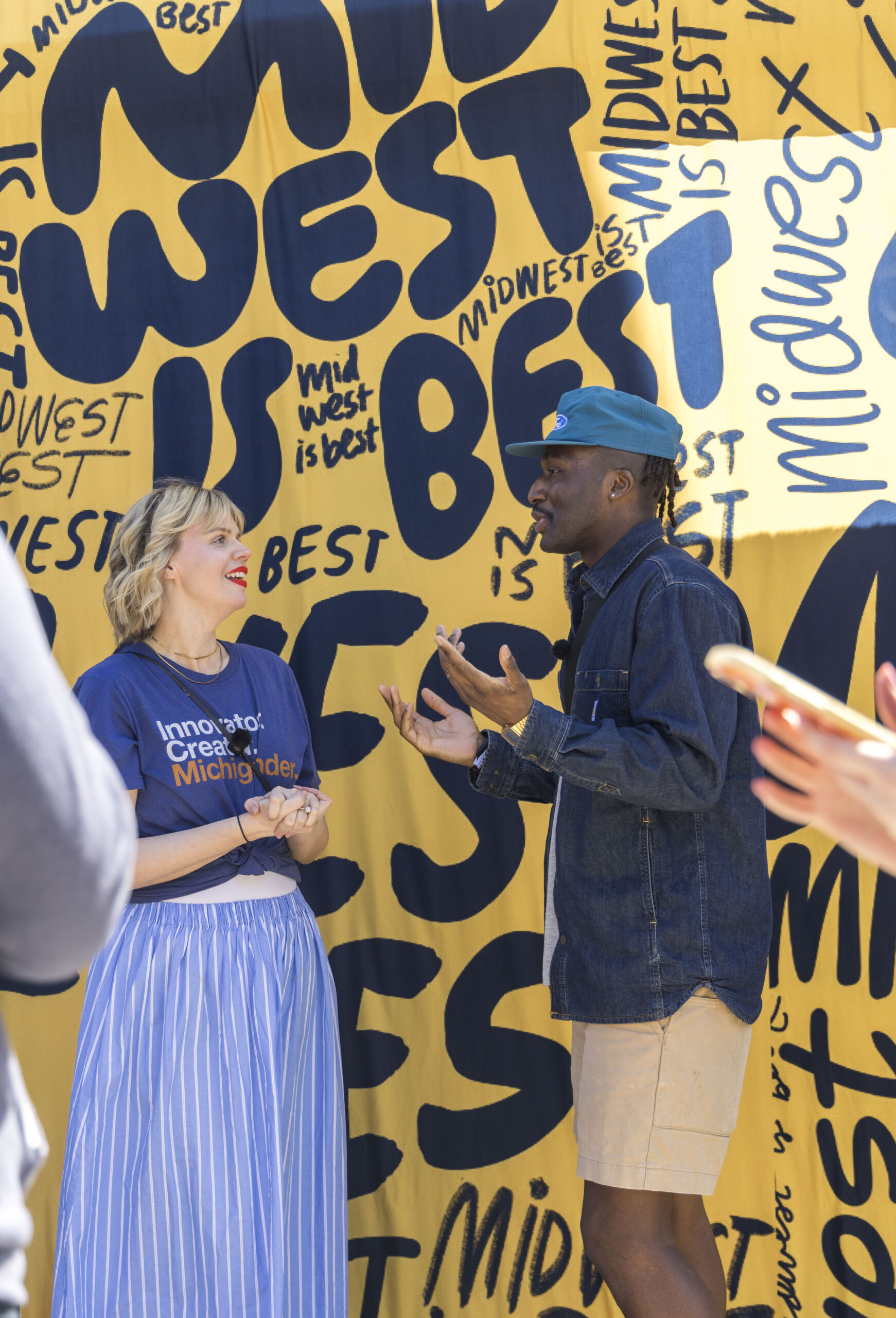
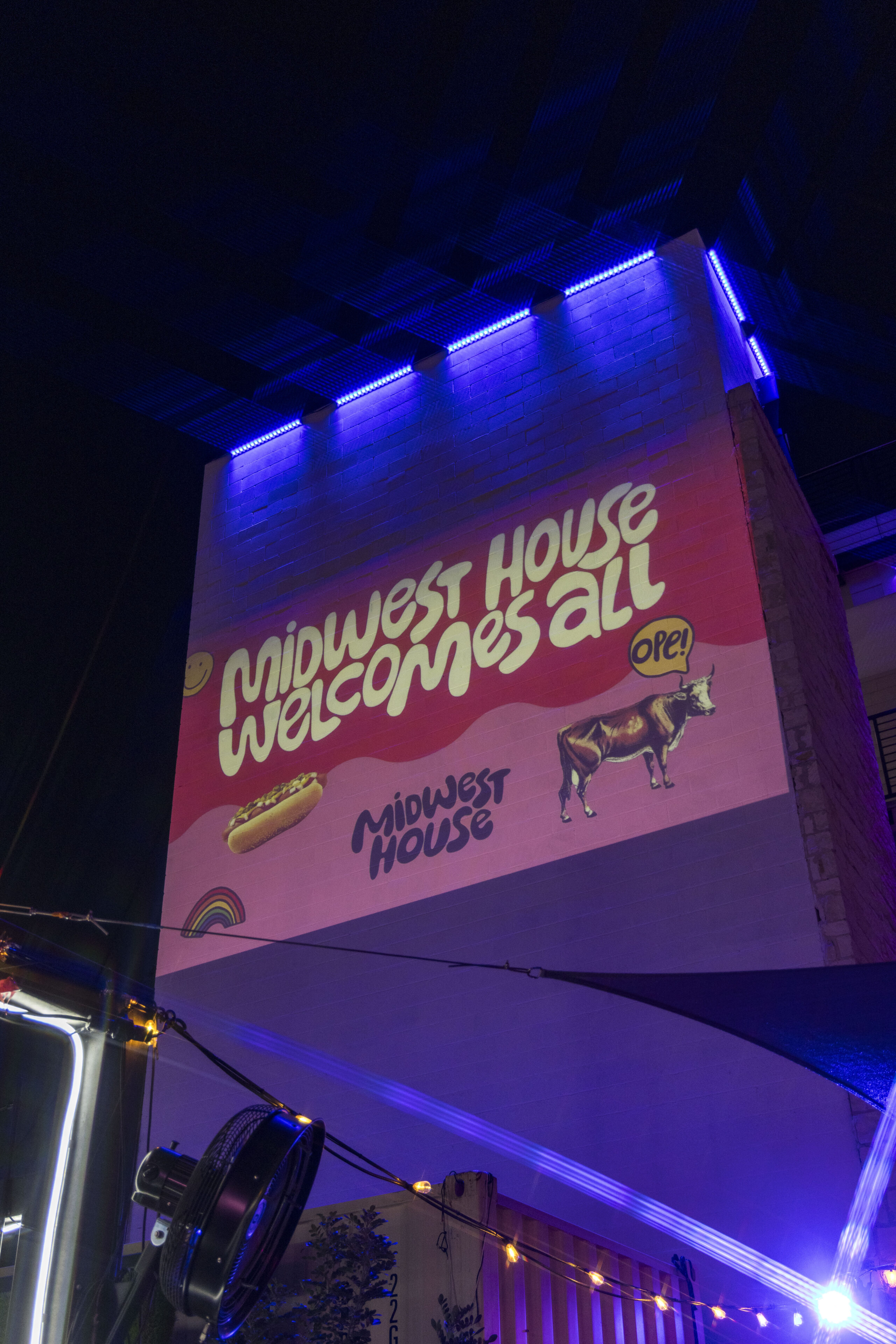
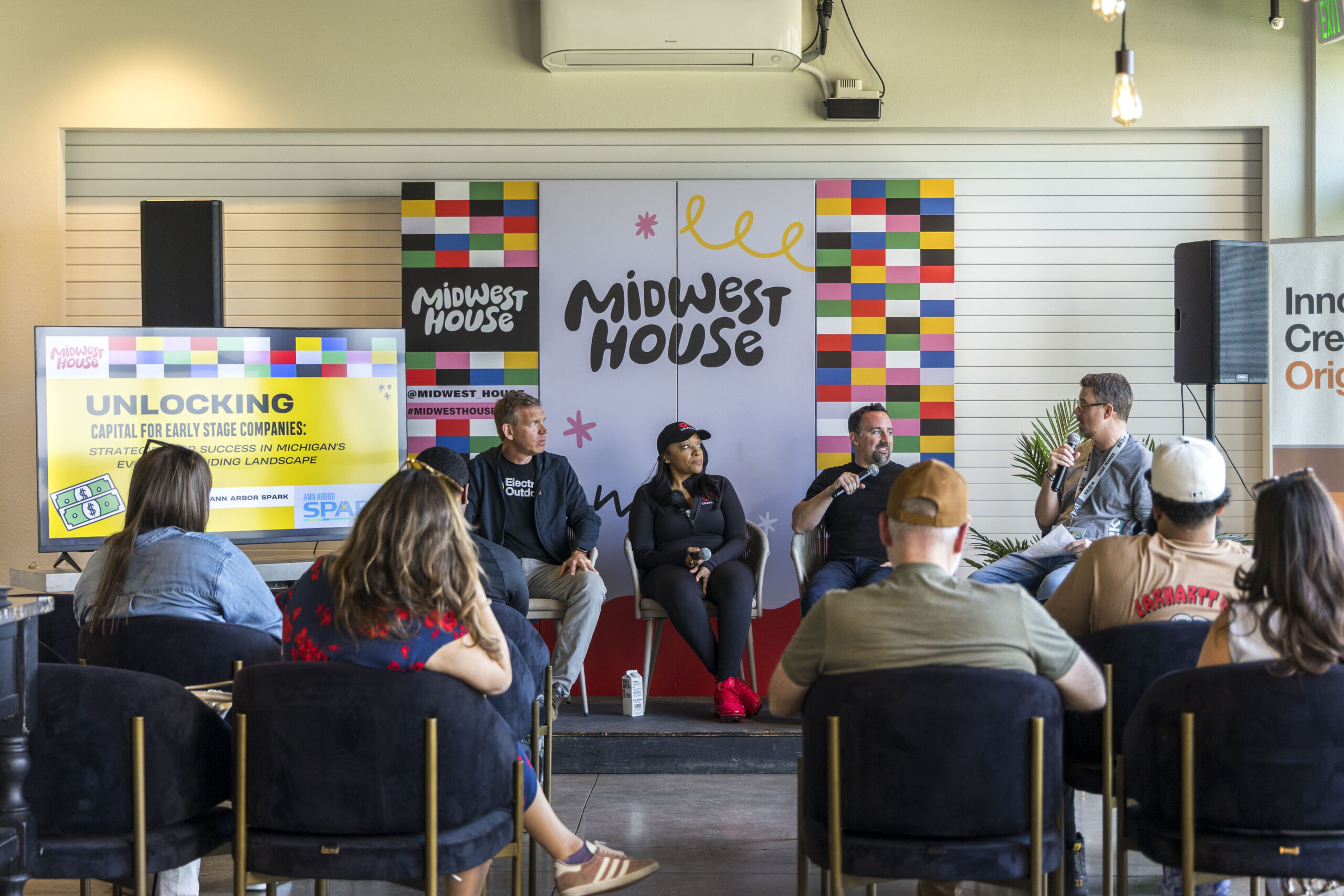
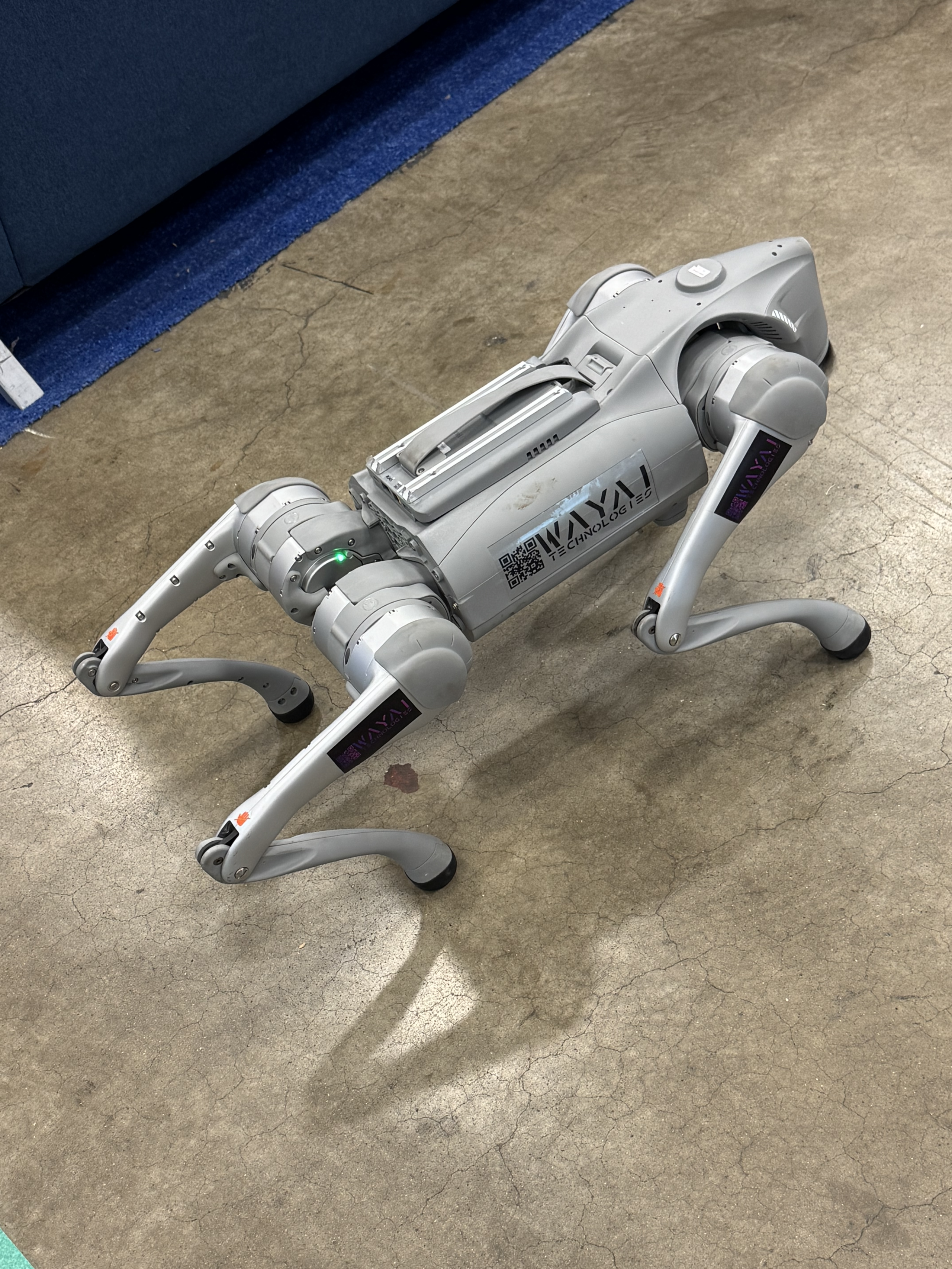
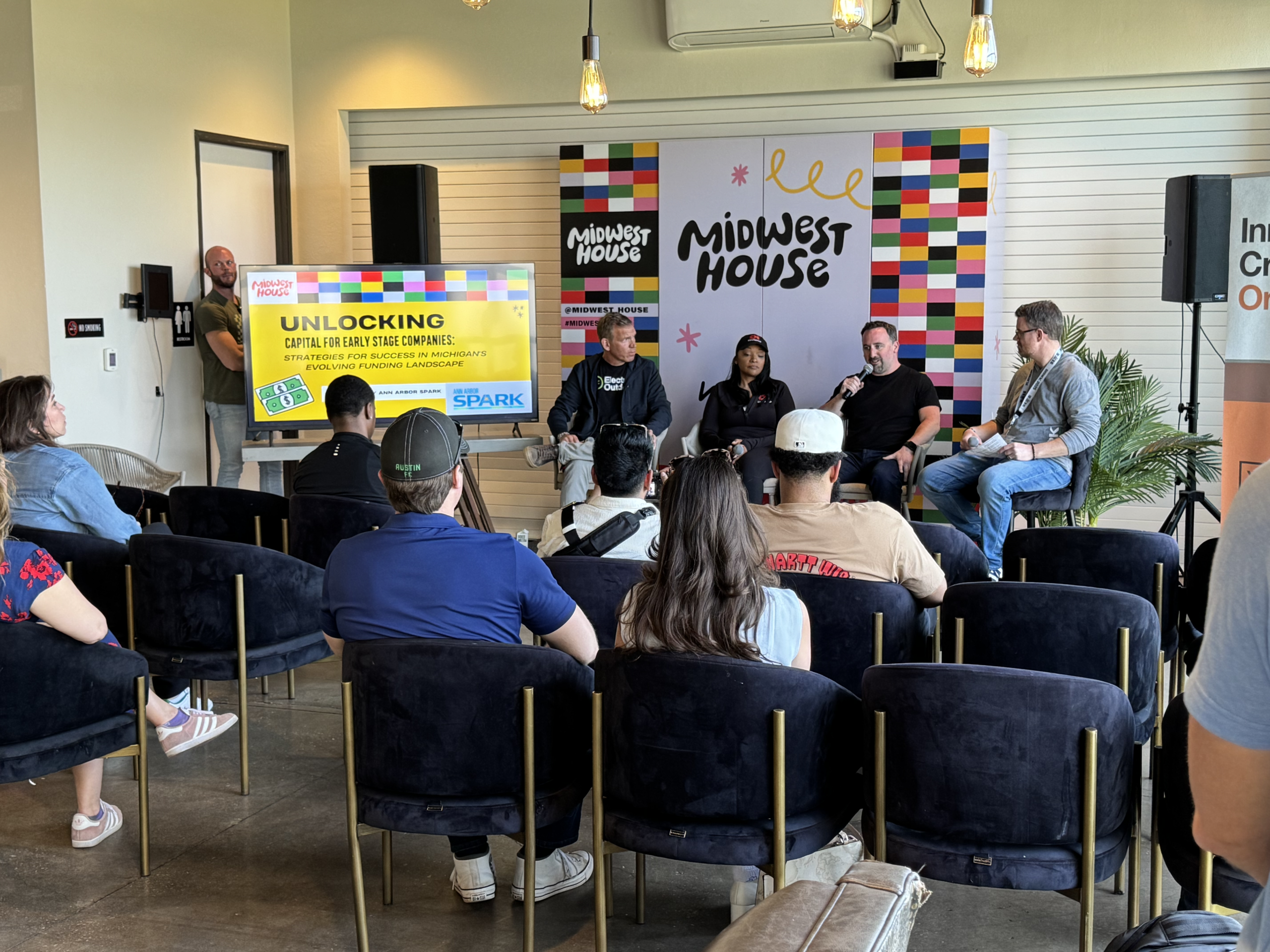
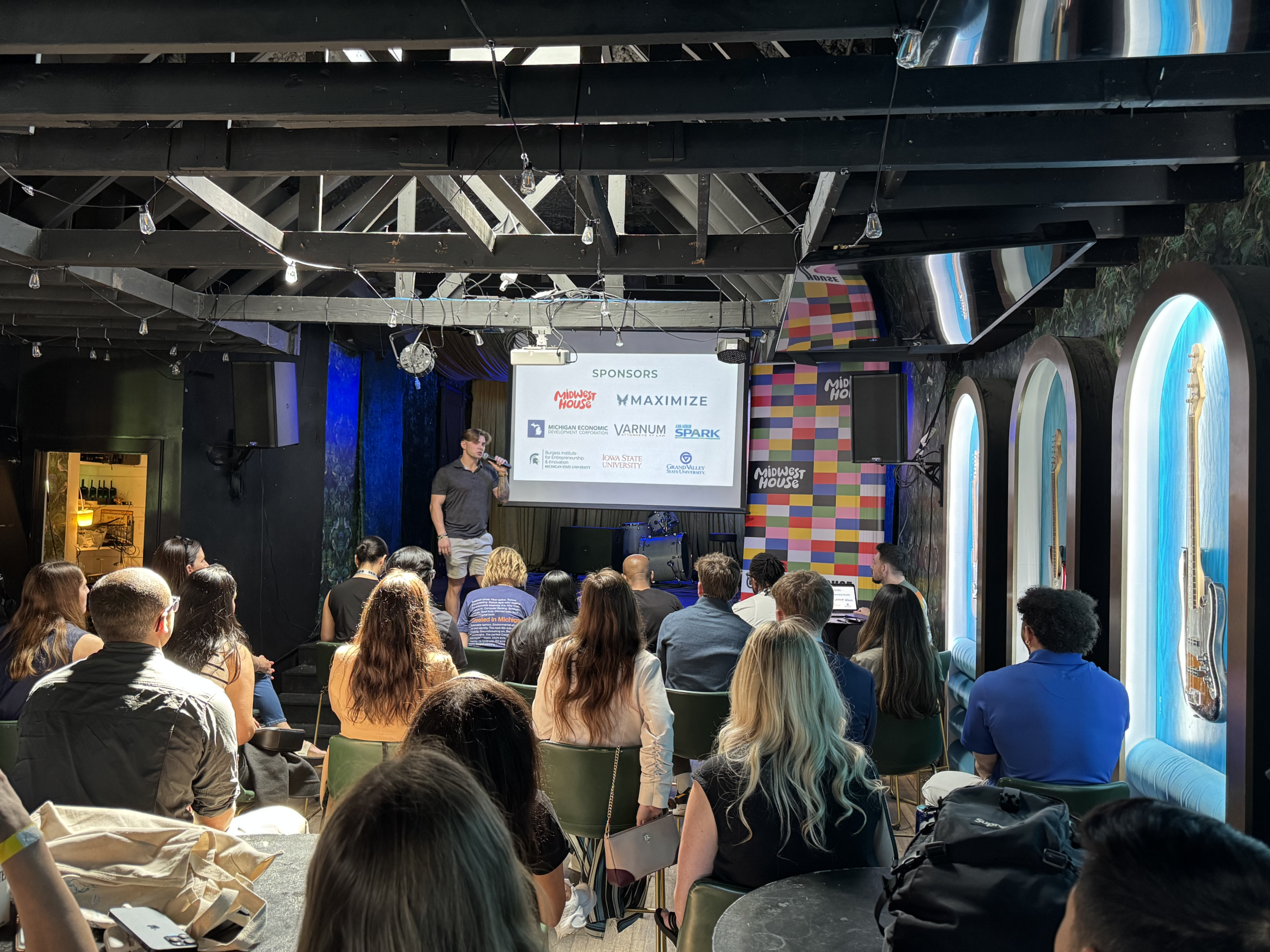
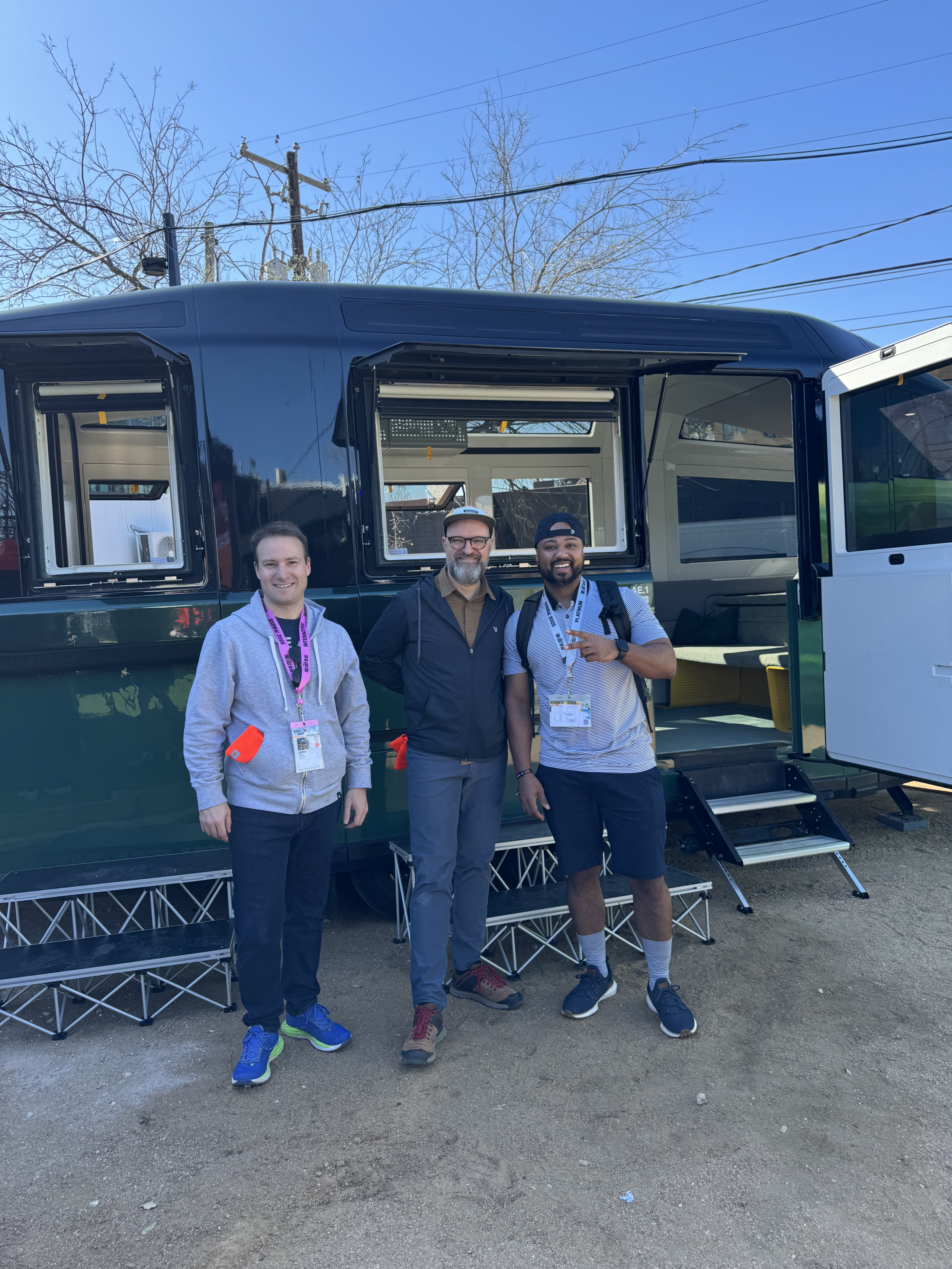
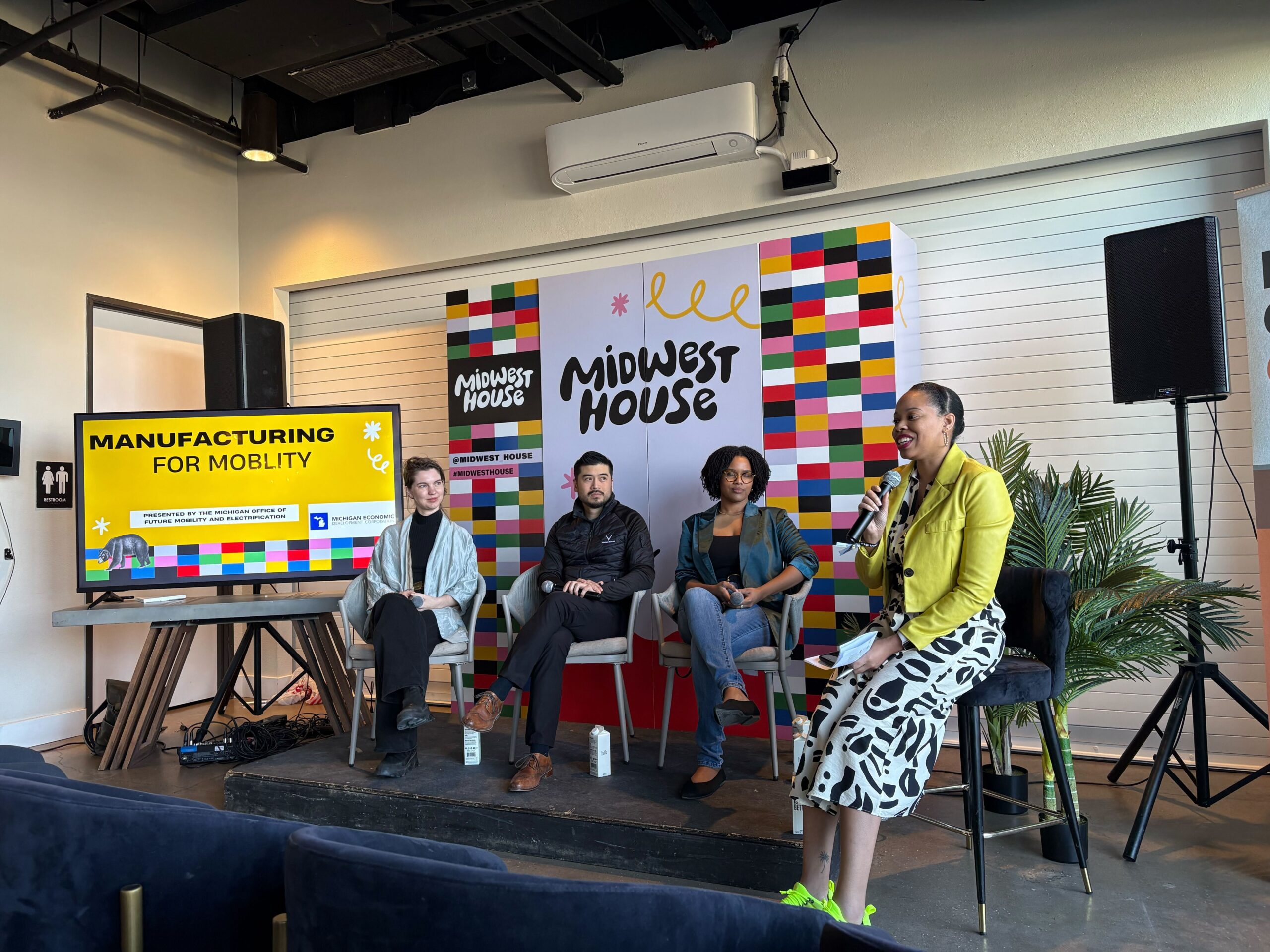
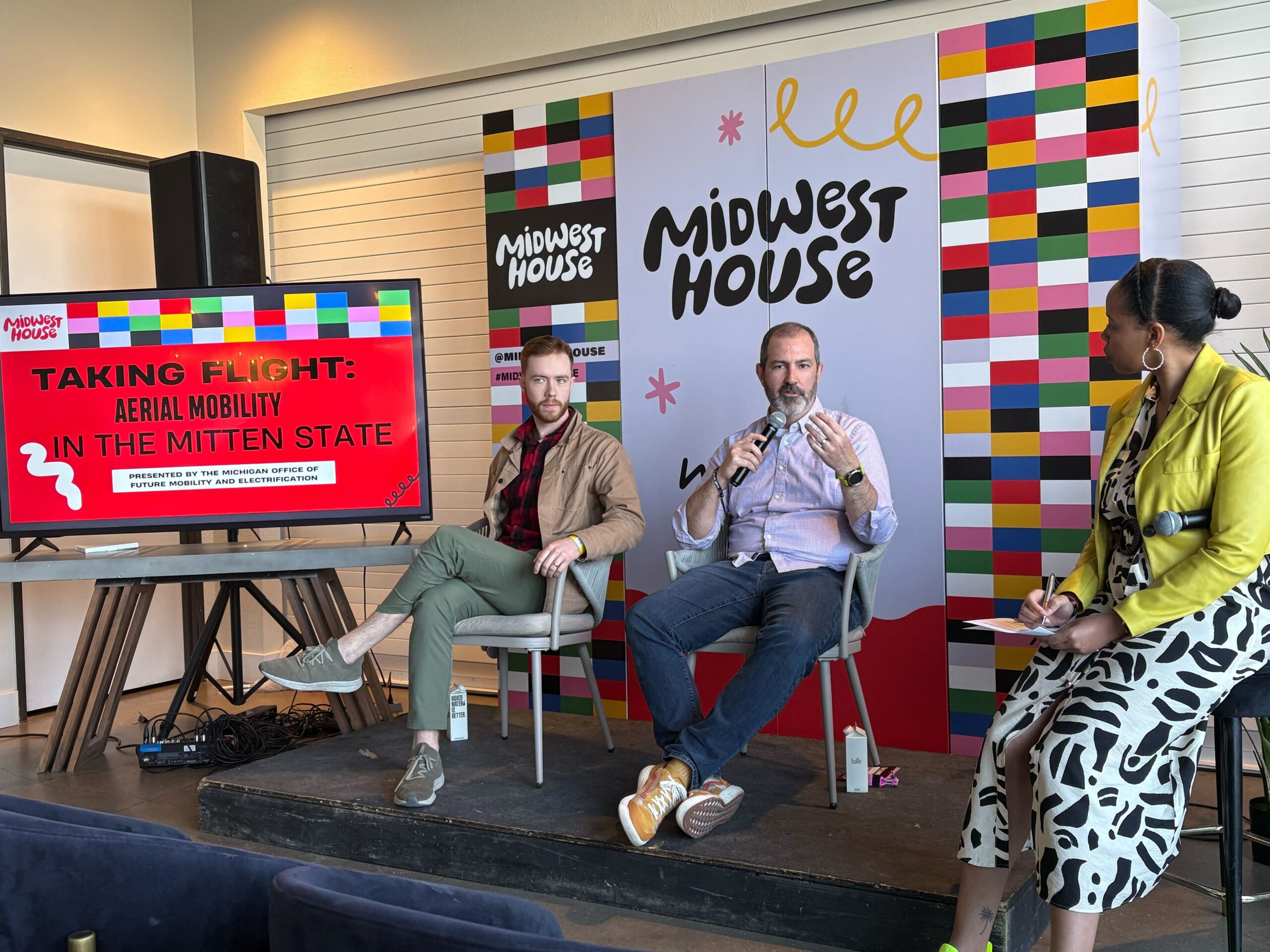
Why SXSW Matters for SPARK
Participating in SXSW helps amplify the visibility of Michigan’s innovation ecosystem on a global platform. From moderating panels to building relationships with founders, funders, and policymakers, SPARK continues to advocate for the state as a top destination for startups and scaling companies.
As Michigan solidifies its role as a leader in next-generation manufacturing, mobility, and sustainability, events like SXSW offer a critical opportunity to connect with national and international audiences—and to bring new ideas, partnerships, and capital back to our region.